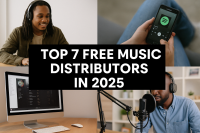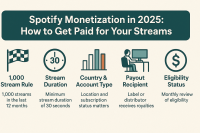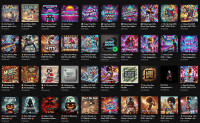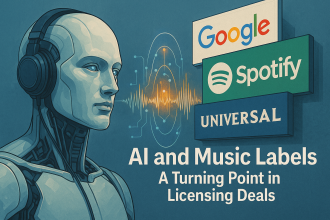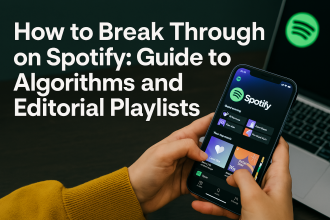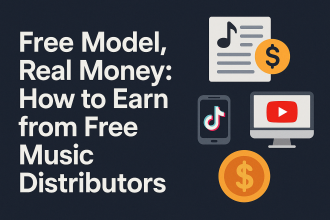2025 Trends and Transformations
The music streaming industry stands at a crossroads. As platforms like Spotify, Apple Music, Deezer, and Amazon reshape their models, the focus in 2025 has shifted from raw user growth to fair monetization, artist compensation, and platform sustainability. After years of near-identical subscription models, the era of experimentation has officially begun.
- 2025 Trends and Transformations
- 1. The End of the “One-Size-Fits-All” Subscription
- 2. Artist-Centric Payment Models Gain Momentum
- 3. Advertising Returns — But Smarter Than Ever
- 4. The Rise of Hybrid Monetization: From Streams to Superfans
- 5. The Global Growth Outlook: A Robust 19% Annual Expansion
- 6. Toward a More Sustainable Streaming Economy
- 7. Final Thoughts
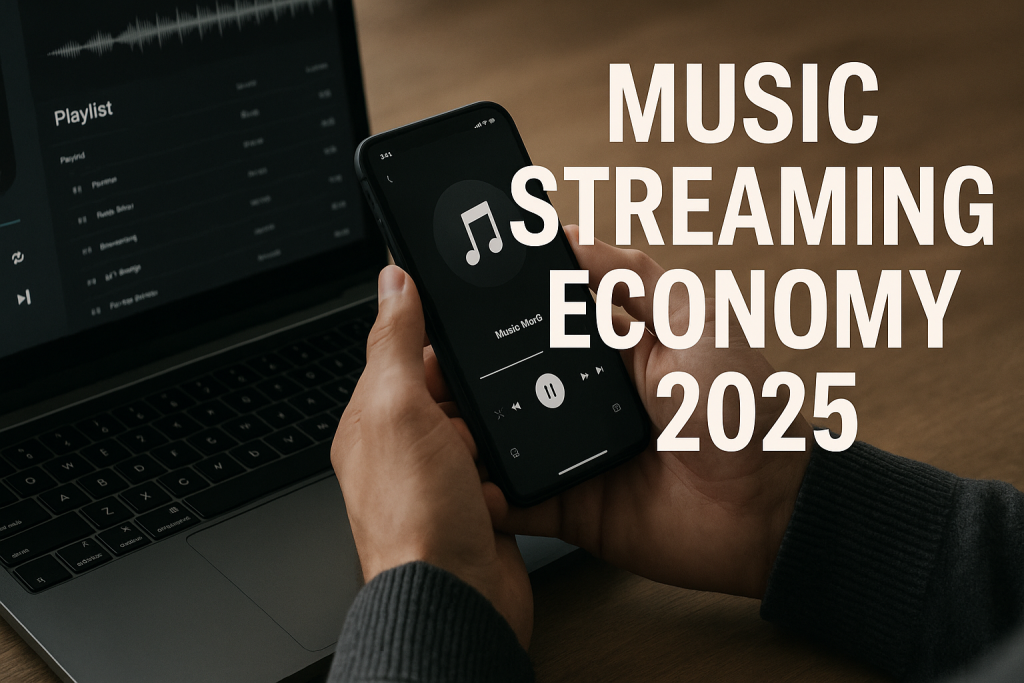
1. The End of the “One-Size-Fits-All” Subscription
For over a decade, music streaming services offered nearly identical plans — $9.99 for unlimited access.
In 2025, this uniformity is finally breaking down. Platforms are testing new pricing tiers based on audio quality, listening behavior, and exclusive content.
- Spotify launched HiFi+, offering FLAC-quality streams with “artist-centric royalties.”
- Apple Music experiments with radio-based micro-subscriptions tied to TuneIn’s live content.
- Deezer and SoundCloud push for “fan-powered royalties,” where payments are linked directly to what users listen to — not to total global streams.
These changes reflect a deeper recognition: music fans are not identical. The casual listener, audiophile, and independent artist supporter all value streaming differently — and now, platforms are finally adjusting to that.
2. Artist-Centric Payment Models Gain Momentum
The pro-rata system (where all revenue is pooled and distributed based on total streams) has long favored chart-topping artists. In 2025, multiple platforms are shifting toward artist-centric models to fix that imbalance.
Under this approach, your subscription directly supports the artists you actually listen to.
This structure could dramatically increase earnings for mid-tier and niche creators, especially in genres like lo-fi, classical, or Afro House — areas that thrive on dedicated fanbases rather than viral hits.
Deezer and SoundCloud were among the first to pioneer this system. According to internal data, early adopters saw a 30–50 % revenue increase for smaller artists compared to the traditional model.
3. Advertising Returns — But Smarter Than Ever
Advertising, once considered a relic of pre-streaming radio, is back in full force — but in a more refined, AI-driven form.
Rather than random ad breaks, modern platforms use contextual targeting, delivering ads that match mood, genre, or time of day.
- Spotify’s Smart Audio Ads adapt tone and length to the listener’s behavior.
- Amazon Music integrates voice-activated promotions through Alexa.
- YouTube Music offers “interactive ad playlists” where listeners can discover tracks linked to sponsored content.
These innovations transform ads from interruptions into experiences — a critical step in making free streaming more sustainable without alienating users.
4. The Rise of Hybrid Monetization: From Streams to Superfans
Streaming platforms are increasingly inspired by creator economy models. The line between streaming and social platforms continues to blur, as services test direct artist monetization features:
- Tipping & donations integrated within artist profiles.
- Exclusive content tiers (behind-the-scenes videos, unreleased demos).
- NFT-style collectibles or token-based fan access.
Spotify’s “Superfan Subscriptions” and Deezer’s “Backstage Access” are examples of how streaming is evolving beyond passive listening toward active patronage.
The goal is clear: build relationships, not just plays.
5. The Global Growth Outlook: A Robust 19% Annual Expansion
Despite saturation in North America and Europe, global music streaming remains a booming market.
Analysts estimate an average 19 % annual growth from 2024 to 2029, driven by:
- Rapid mobile adoption in emerging markets (Africa, South America, Southeast Asia).
- Increased investment in AI-powered discovery tools.
- The growing importance of localized content and regional catalogs.
- Expansion of ad-supported plans for cost-sensitive listeners.
Platforms like Boomplay, JioSaavn, and Anghami illustrate this regional dominance strategy — each tailoring their catalogs, pricing, and recommendations to local cultures.
6. Toward a More Sustainable Streaming Economy
For years, critics claimed that streaming devalued music — reducing art to data points. But as 2025 unfolds, the industry’s tone is changing.
Platforms, artists, and listeners alike are beginning to realize that a sustainable model must balance accessibility with fairness.
Future success will depend on three factors:
- Transparency in royalties — clear data on how and where each dollar flows.
- Diverse monetization options — ads, subscriptions, fan support, and sync licensing.
- Technological ethics — AI detection, fair playlisting, and human oversight.
The next evolution of streaming won’t be about who has the biggest catalog — it’ll be about who builds the most equitable ecosystem.
7. Final Thoughts
The music industry is finally breaking its loop. The “everything-for-$9.99” era is fading, replaced by flexible, fair, and creative economic models.
In 2025, streaming isn’t just a service — it’s an ecosystem that connects creators and audiences in new, more meaningful ways.
As platforms adapt, one truth remains timeless: music is worth more than a play count.
And the platforms that understand this first will define the next decade of sound.
![]()








